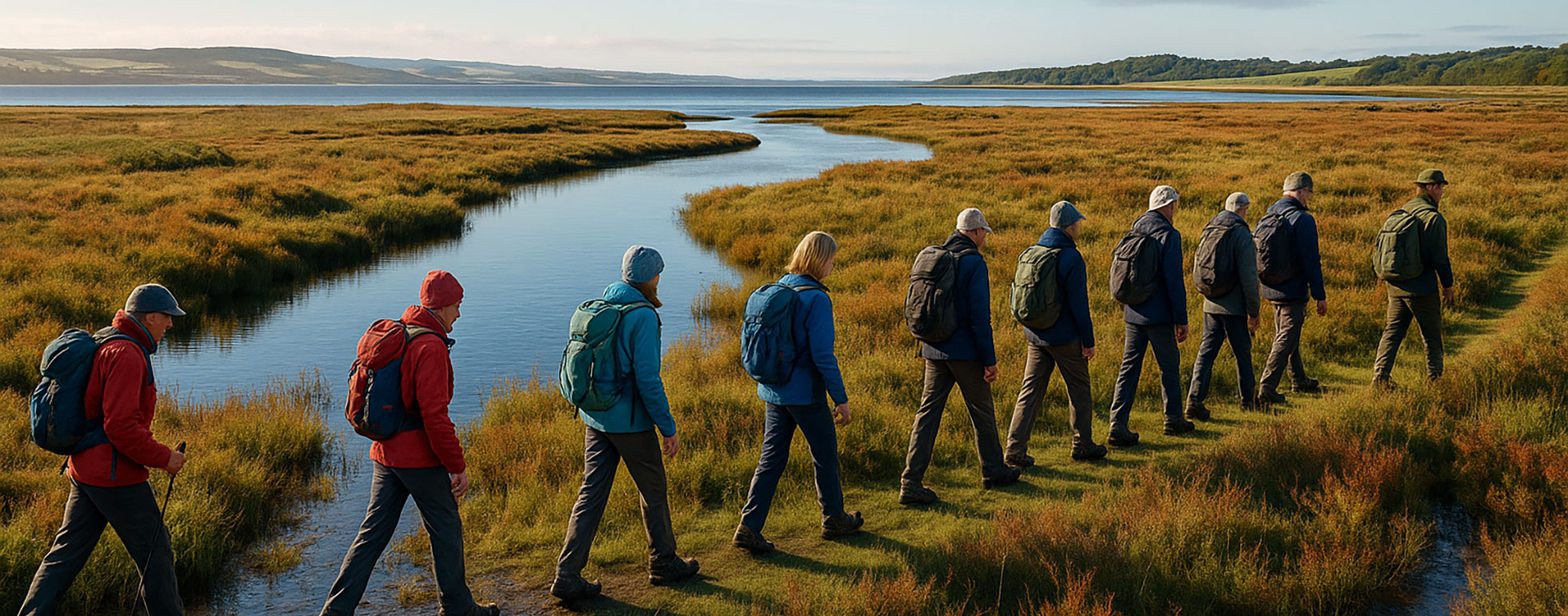Once Upon a Mudflat
Long before “rewilding” became a buzzword or an eco-hashtag, Merkinch was quietly doing its own version of recovery. Back in the day: we’re talking shipyards, fish works, and the kind of industrial grit that’d make your granddad nod approvingly - the wildlife here didn’t stand much of a chance. The air stank of tar, the ground was slick with oil, and even the gulls looked fed up.
Yet nature, being stubborn in the best way, never really left. It just waited. In the cracks of concrete, between the rail lines, in puddles that shimmered rainbow from fuel - something green always found a way to grow. There’s a metaphor in that somewhere, but I’ll let you find it.
The Industrial Hangover
By the mid-20th century, Merkinch was in flux. The shipbuilding slowed, the factories fell silent, and what was left behind wasn’t exactly picturesque. Locals called it “the back end of nowhere.” Kids played among rusted frames and tidal sludge. Wildlife? Sparse at best. The otters had packed up; the herons looked like they were on strike.
But sometimes decline is just a pause. The tides cleaned what they could. Plants began sneaking back. Nature, it turns out, has an excellent memory, and an even better work ethic.
Return of the Wild Things
Fast forward a few decades and you’ll struggle to believe it’s the same postcode. Herons stalk the shallows like they own the place. Redshanks bob along the banks. Even the elusive otter has made a comeback, gliding through waters that once couldn’t have sustained a goldfish. Sea aster blooms where metal once rusted. Progress, but in reverse.
I once met a birder there who’d seen an osprey overhead. He looked half-religious about it. “Didn’t think I’d live to see that again,” he said, as if the sky itself had apologised for the past. Moments like that make you believe in second chances.
People and the Wild - An Uneasy Friendship
These days, people come to Merkinch for calm. Walkers, dog owners, photographers, the odd cyclist wondering how they ended up in a nature reserve. But sharing space with wildlife takes practice. Humans, bless us, like to tidy things, nature prefers chaos. The result is a sort of uneasy truce, negotiated daily between reed beds and rubbish bins.
If you drive down to the reserve: and most do; take it slow. The lanes are narrow, the puddles deep, and the local gulls territorial. Make sure your car insurance is current before your satnav decides “scenic route” means “flooded shortcut!” It’s the Highlands. Weather is a personality, not a forecast.
Why It Changed: and Why It Matters
The shift wasn’t magic. It was people; the quiet kind who plant reeds, clear litter, monitor tides, and never brag about it. Conservationists and locals stitched the reserve back together, metre by metre. The result? A living mosaic of saltmarsh, woodland, and freshwater pools, now home to over a hundred species. It’s not the wild Highlands of postcards: it’s something better: resilience in real time.
Every heron here is proof that neglect can turn to nurture. Every reed whisper is a reminder that patience is louder than progress.
Driving Home; Literally and Metaphorically
Leaving Merkinch always feels strange. You climb back into your car, tyres squelching on soft gravel, and the quiet sticks to you. On the drive through Inverness, you might flick on the radio, only to turn it down again - because honestly, who needs music when you’ve just listened to the tide breathe?
That’s Merkinch’s gift: it slows you down without asking permission. You come for a walk and leave with perspective. Just remember to clean your boots: and maybe your bumper, if you parked too close to the saltwater.
